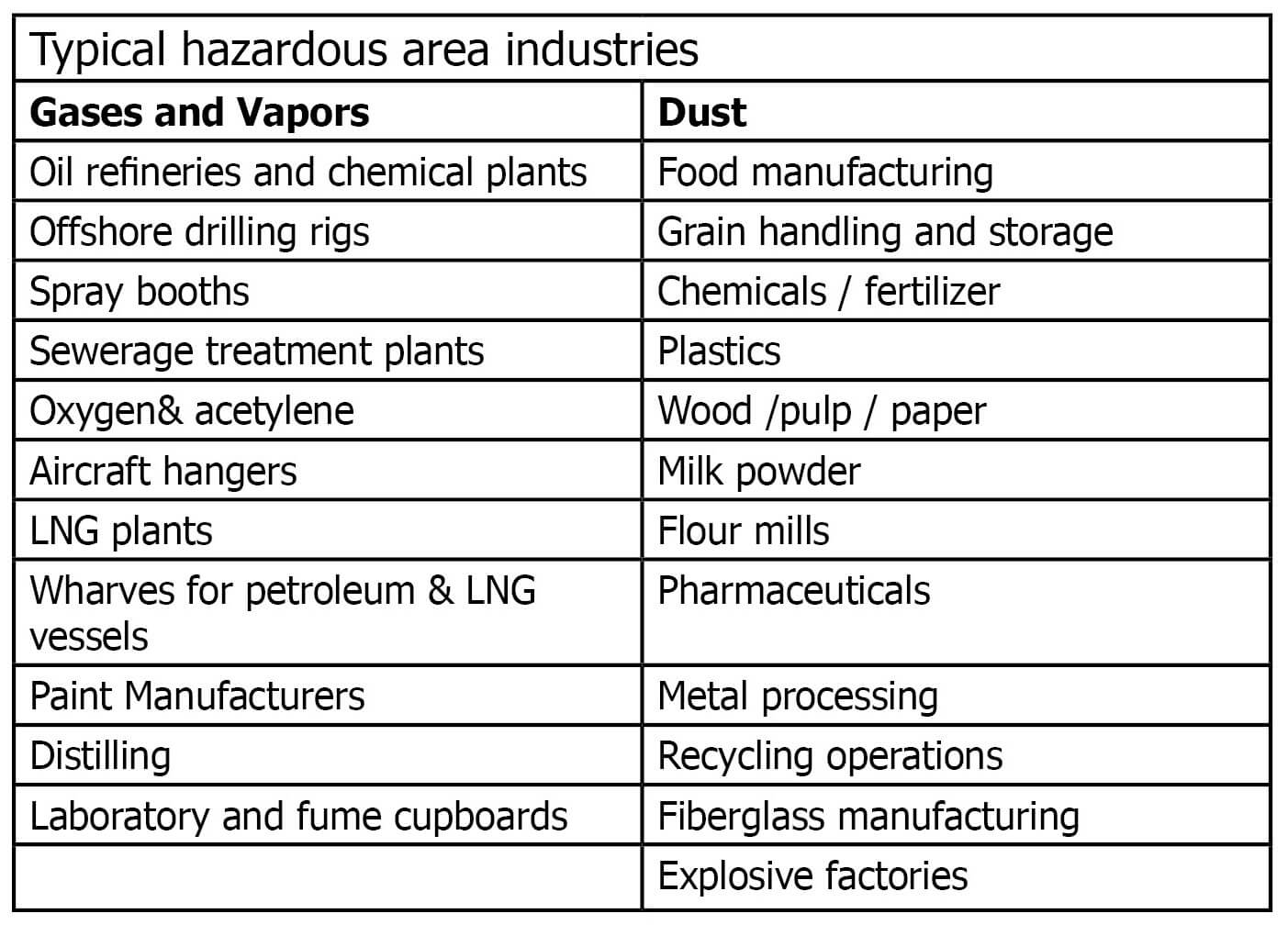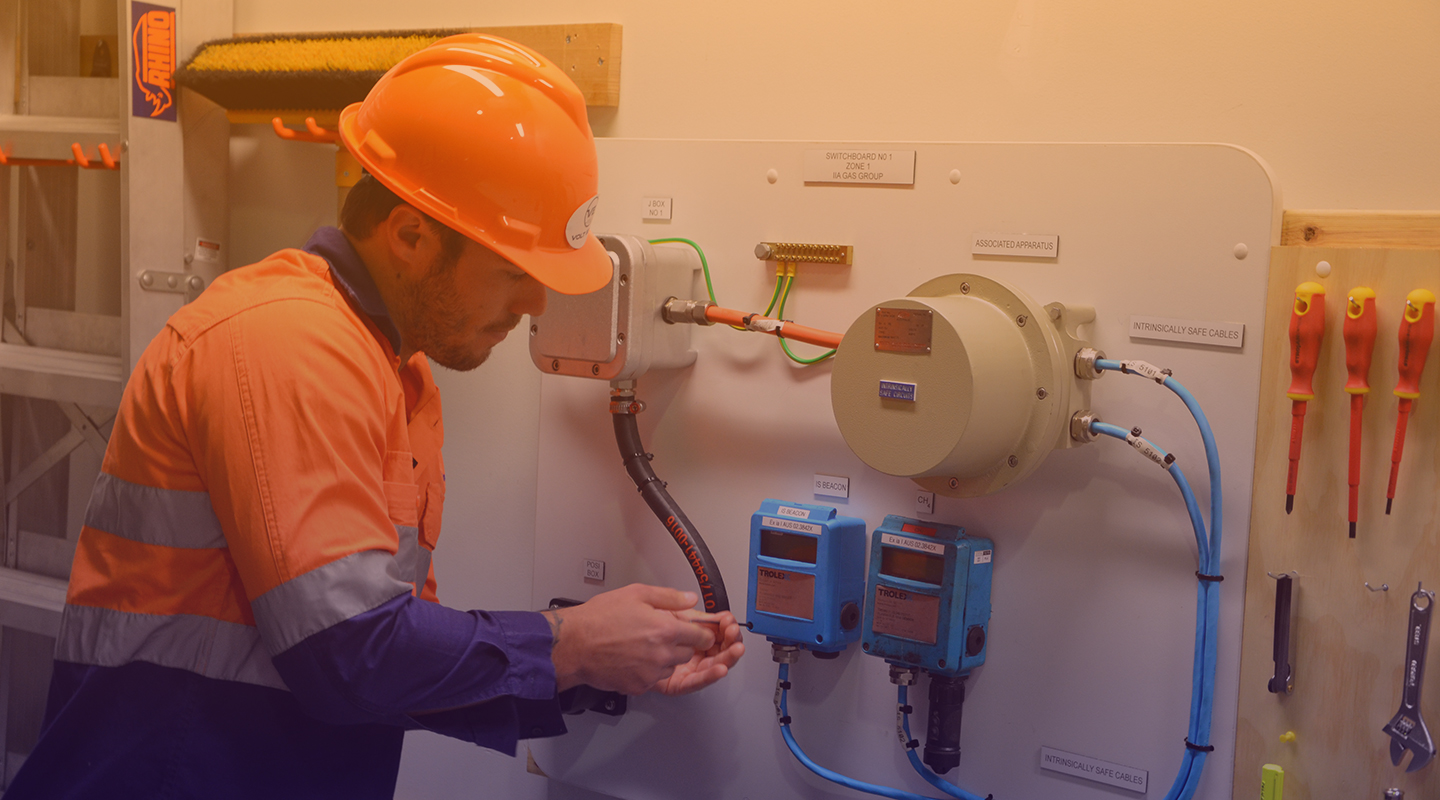Things about Roar Solutions
Things about Roar Solutions
Blog Article
What Does Roar Solutions Do?
Table of ContentsThe Buzz on Roar SolutionsRoar Solutions Fundamentals ExplainedSee This Report about Roar Solutions
In such an environment a fire or surge is feasible when three fundamental conditions are fulfilled. This is often described as the "hazardous location" or "combustion" triangular. In order to protect installments from a potential explosion a technique of analysing and identifying a potentially dangerous area is called for. The function of this is to guarantee the appropriate option and installation of equipment to eventually prevent a surge and to make certain safety and security of life.
(https://www.cybo.com/AU-biz/roar-solutions)
No equipment should be set up where the surface area temperature of the equipment is above the ignition temperature level of the provided hazard. Below are some usual dirt harmful and their minimum ignition temperature. Coal Dust 380C 225C Polythene 420C (melts) Methyl Cellulose 420C 320C Starch 460C 435C Flour 490C 340C Sugar 490C 460C Grain Dust 510C 300C Phenolic Resin 530C > 450C Aluminium 590C > 450C PVC 700C > 450C Soot 810C 570C The chance of the threat being existing in a concentration high adequate to create an ignition will certainly vary from place to place.
In order to identify this risk an installation is split into areas of danger relying on the amount of time the harmful is present. These areas are described as Areas. For gases and vapours and dirts and fibres there are 3 zones. Zone 0 Area 20 A dangerous atmosphere is highly likely to be existing and may exist for lengthy periods of time (> 1000 hours each year) or perhaps continually Zone 1 Zone 21 An unsafe environment is possible however not likely to be existing for lengthy periods of time (> 10 450 C [842 F] A category of T6 means the minimum ignition temperature is > 85 C [185 F] Harmful location electric devices possibly developed for usage in greater ambient temperatures. This would showed on the ranking plate e.g. EExe II C T3 Ta + 60C( This indicates at 60C ambient T3 will not be gone beyond) T1 T1, T2, T3, T4, T5, T6 T2 T2, T3, T4, T5, T6 T3 T3, T4, T5, T6 T4 T4, T5, T6 T5 T5, T6 T6 T6 A T Class rating of T1 suggests the optimum surface area temperature level generated by the tool at 40 C is 450 C. Assuming the connected T Course and Temperature score for the equipment are ideal for the location, you can constantly utilize an instrument with an extra rigorous Division rating than required for the location. There isn't a clear response to this inquiry. It actually does depend upon the kind of equipment and what repairs need to be brought out. Equipment with specific test treatments that can not be executed in the field in order to achieve/maintain 3rd party rating. Should return to the factory if it is before the tools's service. Area Repair Work By Authorised Personnel: Challenging screening may not be called for nonetheless details procedures might require to be complied with in order for the tools to keep its 3rd party rating. Authorised personnel must be used to execute the work correctly Repair work need to be a like for like substitute. New part have to be considered as a direct replacement requiring no unique screening of the devices after the repair is complete. Each item of devices with a dangerous rating must be reviewed independently. These are described at a high level listed below, however, for more thorough info, please refer directly to the standards.
The Buzz on Roar Solutions
The equipment register is a detailed data source of devices records that includes a minimum collection of fields to identify each product's location, technical parameters, Ex-spouse category, age, and environmental information. The proportion of Thorough to Shut evaluations will be established by the Devices Threat, which is evaluated based on ignition risk (the chance of a source of ignition versus the likelihood of a flammable environment )and the harmful location category
( Zone 0, 1, or 2). Implementing a durable Risk-Based Examination( RBI )method is critical for making sure compliance and safety in managing Electrical Devices in Hazardous Locations( EEHA).
About Roar Solutions

In regards to eruptive danger, an unsafe area is an environment in which an eruptive atmosphere is existing (or may be expected to be existing) in quantities that need More Help unique preventative measures for the construction, installment and use equipment. hazardous area course. In this post we discover the obstacles encountered in the workplace, the risk control actions, and the called for proficiencies to work safely
It is a consequence of contemporary life that we produce, store or take care of a series of gases or fluids that are considered combustible, and a variety of dirts that are considered flammable. These substances can, in specific conditions, develop explosive atmospheres and these can have major and terrible repercussions. The majority of us know with the fire triangle eliminate any one of the 3 elements and the fire can not happen, but what does this mean in the context of unsafe areas? When damaging this down into its easiest terms it is essentially: a combination of a certain amount of release or leak of a specific material or material, mixing with ambient oxygen, and the visibility of a source of ignition.
In the majority of instances, we can do little regarding the degrees of oxygen in the air, yet we can have considerable influence on sources of ignition, as an example electric devices. Unsafe locations are documented on the dangerous area classification drawing and are determined on-site by the triangular "EX LOVER" indicator. Below, among other key details, areas are divided right into three types relying on the threat, the likelihood and duration that an explosive environment will certainly exist; Zone 0 or 20 is deemed the most dangerous and Area 2 or 22 is deemed the least.
Report this page